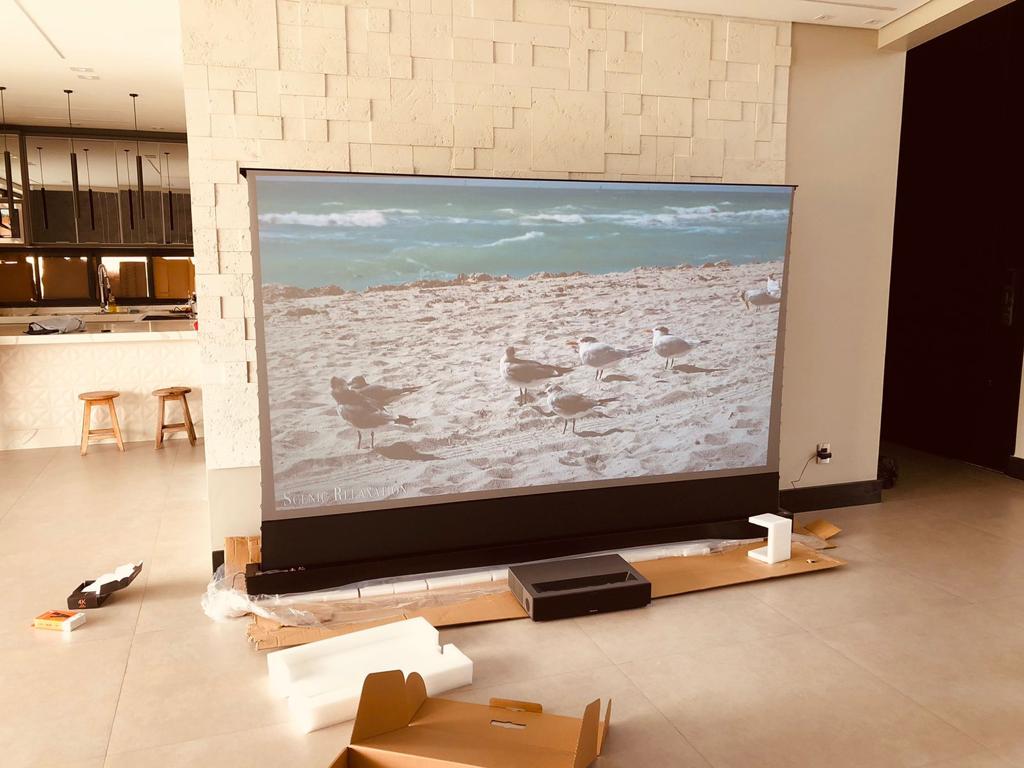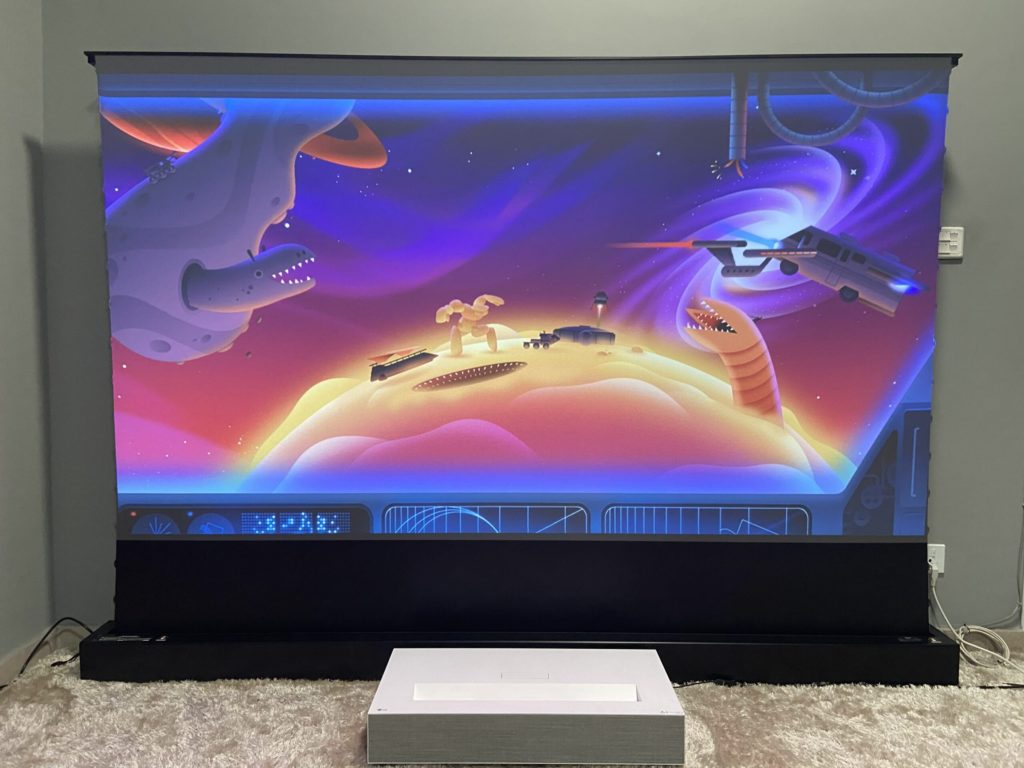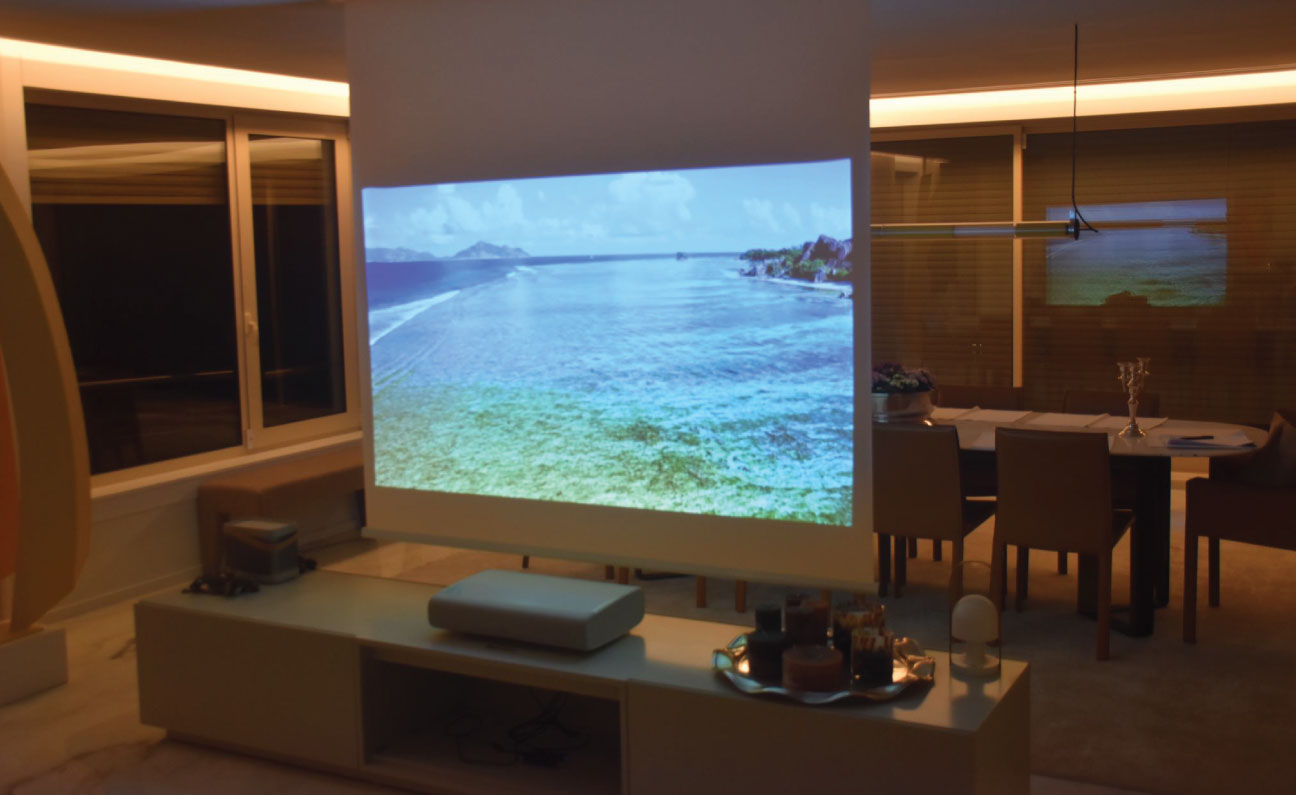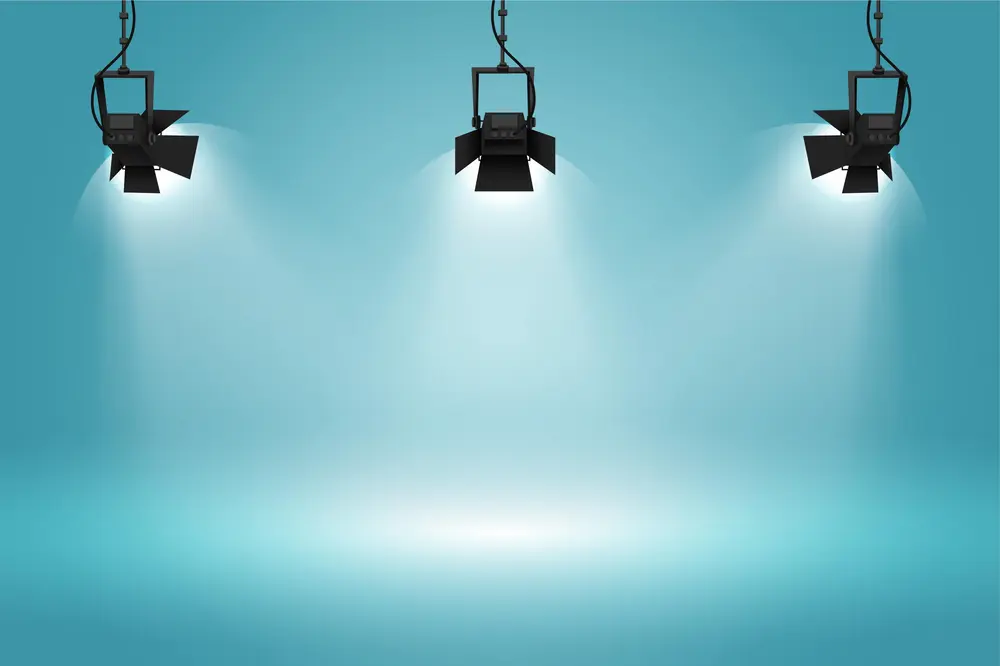In the ever-evolving realm of home entertainment, the quest for an immersive and hassle-free experience is paramount. A critical component of this journey is the projector screen. While conventional screens demand manual operation, the emergence of automated projector screens has garnered attention for their convenience and efficiency. This article delves into the universe of automated projector screens, shedding light on their advantages, diverse types, installation process, and essential considerations for a more straightforward and sophisticated home entertainment setup.
Grasping the Concept of Automated Projector Screens
Varieties of Projector Screens
Before immersing ourselves in the world of automation, it’s prudent to understand the primary projector screen types:
Fixed Frame Screens: These screens are affixed permanently to a wall or frame, providing a flat, unblemished surface for projection. They are a staple in dedicated home theaters.
Motorized Screens: Motorized screens are retractable and can be raised or lowered with the simple push of a button or the convenience of a remote control. Their retractable nature offers immense flexibility in screen deployment.
Portable Screens: Portable screens, lightweight and maneuverable, cater to different settings and arrangements. They are the embodiment of versatility.
The Automated Edge
Automated projector screens, particularly motorized ones, usher in a host of advantages:
Convenience: The sheer convenience of raising or lowering the screen with a mere button press eliminates the manual labor, ensuring a fuss-free experience.
Versatility: Motorized screens can adapt to a multitude of locales, ranging from living rooms to boardrooms and classrooms. Their retractable design renders them versatile for various setups.
Space Efficiency: Automation breathes life into space efficiency. Automated screens have the capacity to be concealed when not in use, a boon for multifunctional spaces.
Aesthetic Professionalism: Motorized screens add an air of professionalism and sophistication to a space, rendering them apt for home and commercial utilization.

Navigating the Installation of an Automated Projector Screen
Preparing the Room
Sound installation begins with comprehensive room preparation:
Electrical Infrastructure: Ensure the availability of electrical outlets within the room for powering the screen.
Mounting Strategy: Decide upon the screen’s location, whether it will be ceiling or wall-mounted. This decision hinges on room layout and projector positioning.
Control System Deliberation: Contemplate the choice of control system, be it a remote control, wall switch, or integration with a home automation system.
The Installation Process
The installation of automated projector screens encompasses a sequence of steps:
Mounting: Securely install the screen on the ceiling or wall in accordance with the manufacturer’s recommendations.
Wiring: Establish connections between the screen, the electrical supply, and the control system. Assure that all connections are firm and reliable.
Operational Verification: Execute a trial run to validate the proper functioning of the screen.
Integration with the Projector
For a harmonious and streamlined operation, automated projector screens can be seamlessly integrated with the projector:
Trigger Mechanism: A multitude of screens feature trigger inputs that can be linked to the projector. This linkage empowers the screen to lower automatically when the projector is activated and retract when it is powered down.
Delving into Essential Aspects of Automated Projector Screens
Screen Material
The judicious selection of screen material plays a pivotal role in determining image quality:
Matte White: This material boasts a broad viewing angle and is well-suited to environments with controlled lighting.
Gray Screens: Gray screens accentuate contrast and are apt for rooms with ambient light.
Acoustic Transparent Screens: These screens permit sound to pass through, rendering them ideal for setups with speakers positioned behind the screen.
Screen Size
Screen size plays a pivotal role in the effectiveness of your home entertainment setup. Selecting the right screen dimensions is essential to ensure an immersive and satisfying viewing experience.
Consider the following key aspects when determining the ideal screen size for your space:
Room Dimensions: The physical dimensions of your room have a significant impact on the screen size. Measure the width and height of the wall or designated area where you plan to install the screen. Ensure that the screen fits comfortably within these dimensions without overwhelming the room.

Viewing Distance: The distance between the viewers and the screen is a critical factor. The screen size should be proportionate to the viewing distance to provide an immersive experience. A general rule of thumb is that the screen width should be approximately one-third to one-half of the viewing distance.
Screen Aspect Ratio: Consider the aspect ratio of the screen, which determines the shape of the screen (e.g., 16:9, 4:3). The choice of aspect ratio should align with the content you intend to watch. For widescreen content like movies, a 16:9 aspect ratio is common, while 4:3 is more suitable for traditional TV shows.
Seating Arrangement: The arrangement of seating and the number of viewers also influence screen size. Ensure that all viewers have a clear and unobstructed view of the screen. In larger rooms or theaters, you might need a larger screen to accommodate more viewers.
Budgetary Considerations
Automated projector screens span a spectrum of price points. Determine your budget and explore screens within your financial parameters. While doing so, weigh features and screen size to make an informed choice.
Room Lighting
Room lighting is a critical consideration when choosing an automated projector screen for your home entertainment or presentation setup. The level of ambient light in the room significantly affects the screen’s performance and the overall viewing experience. Here’s how room lighting factors into your decision:
Controlled Lighting Environment: If your room has controlled lighting, such as blackout curtains, blinds, or dimmable lights, you have the flexibility to choose a standard white screen. These screens are more budget-friendly and work well in darkened environments. Controlled lighting allows you to enjoy the screen’s full brightness and contrast, resulting in a high-quality viewing experience.
Ambient Light: Rooms with significant ambient light, such as sunlight or overhead lighting, require special consideration. In such environments, you may need a screen with high-contrast or gray material. These screens are designed to combat the effects of ambient light, ensuring that the projected image remains visible and clear. They enhance contrast and reduce the impact of external light sources.
Light Control Accessories: Depending on your room’s lighting conditions, you may need light control accessories like blackout curtains or blinds. These can be used to create a controlled lighting environment and enhance the performance of your automated projector screen.
Maintenance Regimen
Prudent maintenance routines are imperative for safeguarding the longevity of your automated projector screen. Adherence to the manufacturer’s directives on cleaning and upkeep is paramount to sustain operational integrity.
Concussion
Automated projector screens represent a realm of streamlined and sophisticated solutions for enhancing your home entertainment setup. Whether the context is a home theater, a conference room, or a versatile multipurpose space, the convenience, versatility, and space-saving attributes of automated screens will enhance your experience. A grasp of screen types, seamless installation procedures, and astute considerations will enable you to select and install an automated projector screen that seamlessly aligns with your projector, culminating in a transformed space that marries entertainment and professionalism.




